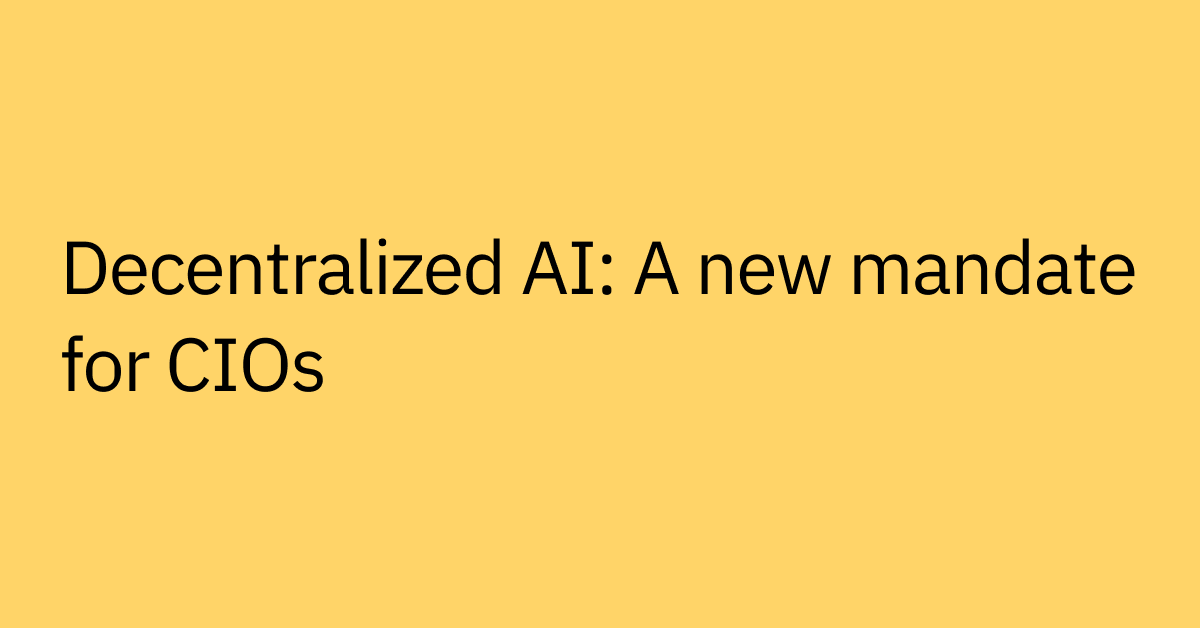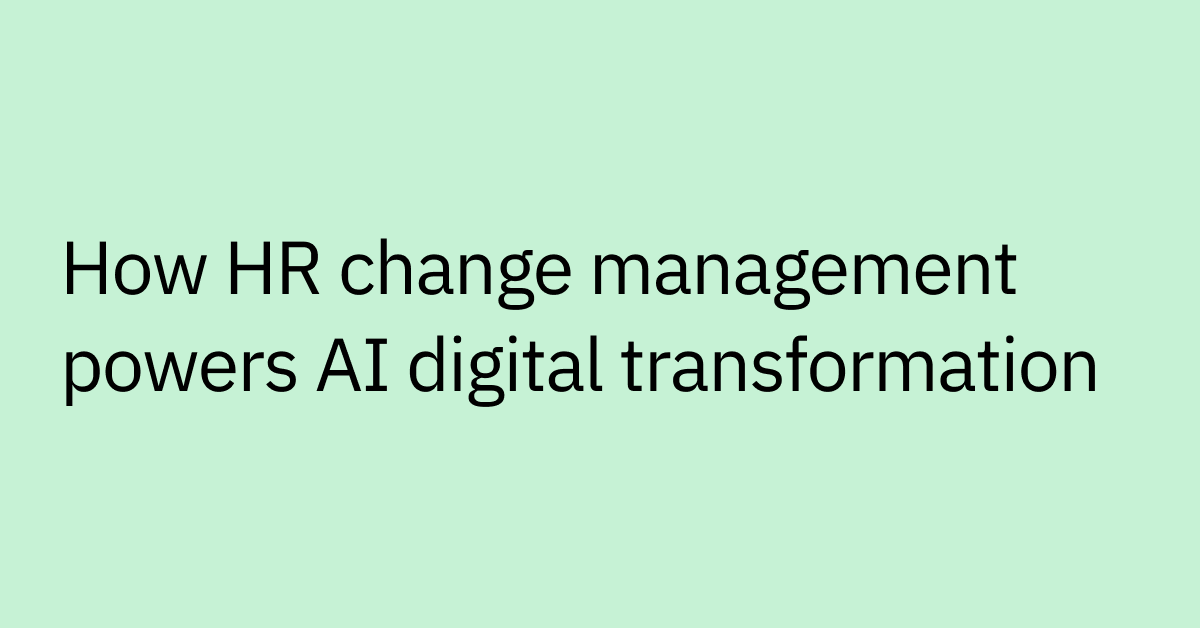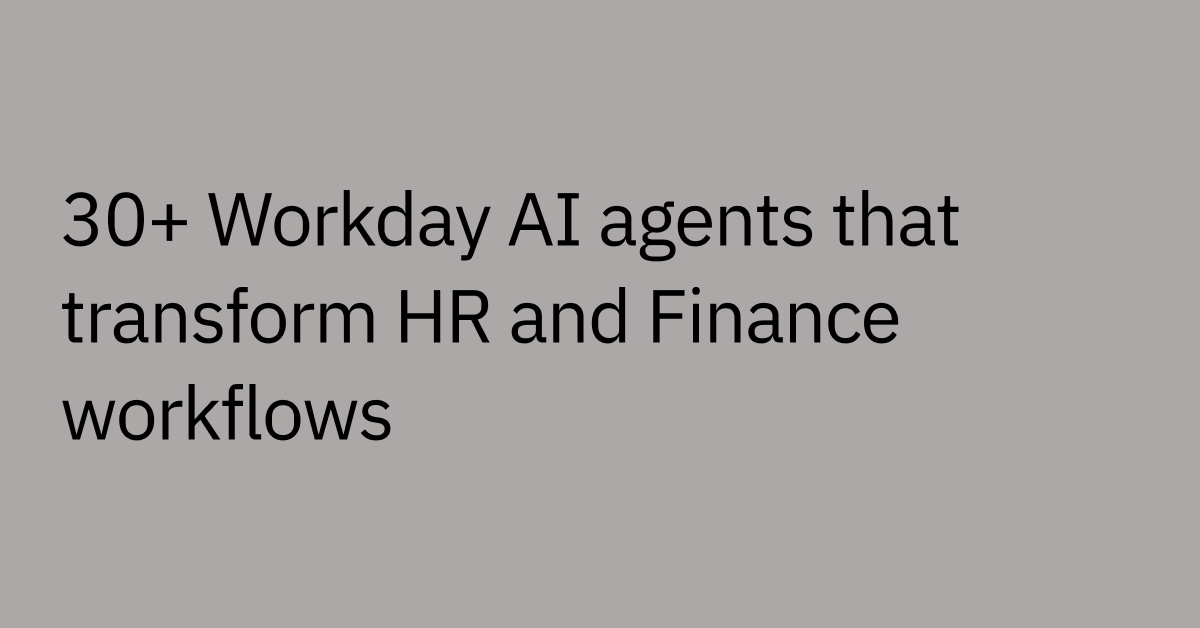Table of contents
- Employee experience spans the entire employee lifecycle, from recruiting to offboarding.
- A great employee experience combines seamless processes, timely support, and a sense of value and belonging.
- Onboarding, internal communication, and self-service are especially high-impact areas to prioritize.
- Multilingual support and automation free up HR and IT to focus on strategic work.
- AI helps scale personalized, timely support, even across global or hybrid teams.
Your best employees have options. In today's talent market, they aren't just looking for a paycheck — they’re looking for an experience that makes them feel supported, empowered to do their best work, and perhaps most importantly, valued.
Yet many organizations struggle to deliver on that promise. Research shows that companies with highly engaged employees see 23% higher profitability and 14% higher productivity (not to mention lower turnover). But here's the challenge: creating that level of engagement requires more than just good intentions.
It takes a strategic approach to every touchpoint in the employee journey — from the moment someone applies to your company to their eventual departure.
The organizations that get employee engagement right understand that the employee experience isn't just a human resources-specific initiative. It's a business strategy that touches every department and demands the right mix of human connection, seamless processes, and intelligent automation.
Employee experience at every stage of the employee lifecycle
Employee experience encompasses every interaction an employee has with your organization, from their first look at your careers page to their final exit interview, and even beyond through alumni networks or referrals.
Together, these moments shape how employees perceive and experience your company. And because they occur throughout the entire employee lifecycle, every interaction is a chance to strengthen or weaken that relationship.
Successful organizations recognize that optimizing the employee experience at every stage creates an environment that employees want to be in and are able to thrive.
This holistic approach also means considering how each phase connects to the next, ensuring easy transitions and consistent support along the way — whether that's through the use of AI, personalized human support, or a thoughtful mix of both.
1. Attraction and talent recruitment
The employee experience starts long before day one.
From the moment a potential hire engages with your brand — whether through your careers page, LinkedIn presence, Glassdoor reviews — they're forming impressions about what it might be like to work at your company.
The application process, interview experience, and communication style during recruitment all serve as previews of your company culture. Candidates notice whether your team responds promptly, treats them with respect, and provides clear information about next steps.
They’re also paying attention to inclusive hiring practices, such as accessible applications, diverse interview panels, and clear, bias-free job descriptions.
Organizations that do well in this area make the recruitment process feel collaborative rather than another transaction in a sea of hundreds of applicants. They communicate transparently about timelines, provide meaningful feedback, and ensure every candidate — regardless of outcome — leaves with a positive impression of the company.
Some even go further, re-engaging strong candidates for future opportunities to strengthen their talent pipeline over time.
Measuring candidate satisfaction through post-interview surveys or candidate Net Promoter Score (NPS) can also help identify opportunities to improve the hiring experience.
2. Smooth employee onboarding
Onboarding new employees sets the tone for everything that follows in the employee journey. It's where first impressions solidify and where new hires form lasting opinions about your organization's competence and care.
But many onboarding experiences don’t meet expectations. Consider these common pain points:
- Scattered resources across multiple systems and platforms
- Delayed access to essential tools and applications
- Unclear processes for completing required paperwork
- Limited visibility into progress and next steps
- Inconsistent communication between HR and IT teams
These friction points can negatively impact employee satisfaction and directly affect time-to-productivity and early retention rates.
Effective onboarding is more than just paperwork and system access — it’s about helping new hires feel confident, connected, and set up for success from day one.
The best onboarding experiences provide clear workflows, automate routine tasks like account provisioning, and ensure easy access to information when employees need it.
They also include welcome messages from leadership, role-specific training paths, and early connections with peers or mentors to foster belonging.
And it pays off: Companies with strong onboarding improve new hire retention by 82% and productivity by over 70%, according to research from Glassdoor.
This means having systems that work together and support teams by coordinating effectively behind the scenes.
And for distributed or global teams, offering onboarding resources in multiple languages and across time zones can be the difference between a smooth start and a confusing first week.
3. Reliable multilingual self-service support
Employees expect immediate, personalized answers to routine questions about benefits, policies, tools, and processes.
They want support that meets them where they are, whether that's in their native language, their preferred communication channel (such as Microsoft Teams or Slack), or their specific time zone.
When employees struggle to find information quickly, productivity suffers and frustration builds.
It becomes even more complex for international companies where employees need regional and localized support that takes into account different regulations, cultural norms, and business practices.
Organizations can address this by creating centralized knowledge bases and enterprise search capabilities that make information discoverable and easily accessible — in whatever language the team needs.
They invest in multilingual self-service solutions that let employees find answers on their own, reducing wait times and eliminating the back-and-forth that often accompanies traditional help desk support tickets.
The best support systems go beyond static FAQs — they use AI to deliver dynamic answers tailored to the employee’s location, role, or question context.
For example, an employee in Germany asking about holiday policies should receive guidance aligned with local labor laws — in German.
By handling high-volume, routine inquiries — like PTO balance checks, password resets, or software access requests — AI frees up your HR and IT teams to focus on more complex, strategic work that requires human expertise.
As companies scale or support hybrid workforces, offering 24/7, multilingual self-service becomes essential for delivering consistent, equitable support across locations.
4. Clear internal communication
Regular and transparent communication between leadership, HR, and employees forms trust and engagement across teams.
Effective communication facilitates information sharing, builds alignment, reinforces company values, and helps employees understand how their work contributes to broader organizational goals.
It also plays a critical role during moments of change — whether it’s a reorg, new policy rollout, or company-wide initiative — helping employees feel informed and involved rather than caught off guard.
Here are some examples of communication that strengthen the employee experience:
- Regular company updates that share wins, challenges, and strategic direction
- Multiple feedback channels that make it easy for employees to share ideas and concerns
- Personalized messaging that delivers relevant information based on role, location, or department
- Transparent decision-making processes that help employees understand the "why" behind changes
- Two-way communication opportunities, such as Q&A forums, town halls, or open “Ask Me Anything” (AMA) sessions with leadership that encourage open dialogue and build trust
The most effective internal communication strategies recognize that different employees prefer different channels and cadences.
While some may want detailed email updates, others may prefer quick Slack messages, and face-to-face discussions during team meetings are often valued.
AI can support this by helping personalize communications at scale — ensuring the right messages reach the right people at the right time, without overwhelming inboxes.
5. Opportunities for growth and development
Professional development opportunities play a major role in employee engagement, retention and performance. When employees see a clear path forward and feel supported in their growth, they're more likely to stay committed and invested in their work.
Effective growth and career development programs have:
- Upskilling and reskilling programs that help employees adapt to changing business needs
- Mentorship opportunities that connect employees with experienced colleagues
- Clear career paths that outline potential progression within the organization
- Cross-functional projects that expose employees to new areas and skills
- Educational support like tuition reimbursement or conference attendance
- Leadership development programs for high-potential employees
- Access to learning platforms and on-demand training that employees can explore at their own pace
Importantly, development shouldn’t be limited to formal training. Encouraging stretch assignments, shadowing opportunities, and regular career conversations can all help employees feel like they’re growing — even if they’re not switching roles.
Employee recognition and empowerment also reinforce positive experiences. When employees feel that their contributions are valued and they have autonomy in their roles to do what they were hired to do, they’re more motivated, engaged, and have higher job satisfaction.
A strong learning culture doesn’t just benefit individuals — it builds resilience, agility, and innovation across the organization.
And it’s a major retention driver: 94% of employees say they would stay longer at a company that invests in their learning and development.
6. Continuous feedback and insights
Collecting and acting on employee feedback helps organizations understand what drives engagement and identify potential issues before they impact performance or lead to attrition.
Regular feedback collection serves multiple purposes. It:
- Shows employees their voices are heard and valued
- Provides actionable data to guide improvements
- Helps you spot trends that might not be visible through day-to-day interactions
However, it's common for organizations to struggle with feedback fatigue or scattered employee experience survey results that don't translate into actionable insights. The goal isn’t just to collect data — it’s to close the loop.
When employees don’t see visible outcomes from their feedback, trust erodes and participation drops.
In fact, 1 in 3 employees say their feedback is ignored by their employer — a key driver of disengagement and turnover.
That’s why a successful feedback strategy includes not only regular pulse surveys and engagement check-ins, but also structured follow-ups, transparent communication about what’s being done, and a cadence for ongoing improvement.
AI-powered analytics can also help identify patterns, spot emerging issues, and recommend specific actions at scale — especially in large or distributed teams.
For example, sentiment analysis can detect shifts in morale before they show up in attrition numbers, giving leaders a chance to act early.
Ultimately, feedback shouldn’t feel like a formality — it should be embedded into the culture as a continuous conversation between employees and the organization.
7. Offboarding employees
The departure process significantly impacts how employees remember their time at your organization and whether they'd consider returning or recommend you to others.
A respectful, professional offboarding experience can help maintain positive relationships, even as employees transition to new opportunities. And this matters more than you might expect, especially given that boomerang hiring (employees who return after leaving) is seeing an uptick in today's job market.
Effective offboarding does more than collect equipment and conduct an exit interview. It offers a smooth, structured transition for both the departing employee and the teams they're leaving behind. That includes:
- Knowledge transfer to minimize disruption
- Clear communication to impacted teams
- Secure offboarding workflows to protect company data and systems
- Exit interviews that uncover insights into culture, processes, or leadership gaps
Done well, offboarding reinforces the employee’s sense of being valued — even at the end of their journey. It can lead to stronger alumni networks, future referrals, or even rehiring opportunities.
Automation and AI can streamline parts of this process — from automatically deactivating accounts to scheduling feedback surveys — reducing manual overhead and ensuring nothing falls through the cracks.
Ultimately, offboarding is a key moment that reflects your organization’s values just as much as onboarding does.
How AI and automation bring it all together
Creating great employee experiences becomes more challenging as your organization grows and teams become more distributed. Manual processes that work for 50 employees will likely start breaking down at 500 or 5,000 employees — creating delays, inconsistencies, and increased overhead.
This is where artificial intelligence and automation come into play. These technologies can help organizations deliver consistent, high-quality support across the entire employee lifecycle, regardless of company size or geographic distribution.
AI and automation can streamline onboarding, simplify access to resources, and personalize support — all while reducing the manual burden on HR and IT teams.
Employees get the tools and information they need when they need them, regardless of time zones or languages.
Intelligent automation handles routine tasks and information requests through AI assistants — freeing up HR teams to focus on strategic initiatives that require empathy, creativity, deeper engagement.
24/7 multilingual employee support
AI-powered support systems can provide employees with instant access to information and assistance, reducing wait times and confusion about where to find help.
This “always-available” support can lead to higher productivity and satisfaction, especially in hybrid or remote work environments, where employees might not have immediate access to colleagues or support staff. When someone has a question about benefits enrollment at 10 PM their time or needs help with access on a weekend, they're able to get answers immediately, and in their preferred language.
Self-service and automation
Employees often prefer resolving common issues on their own rather than waiting for human assistance.
Self-service powered through AI allows employees to handle routine tasks like
- Password resets
- Access approvals
- Information updates
Through conversational interfaces (e.g., Slack, Microsoft Teams, or internal portals), they can quickly complete common requests without having to wait for assistance.
Deliver personalized, timely information
AI systems can personalize support and internal communication by tailoring recommendations and updates based on employees' roles, location, and preferences. This targeted approach keeps information relevant and prevents information overload.
By delivering the right message to the right person at the right time, AI helps foster trust, clarity, and alignment.
Turn feedback into actionable insights
Analytics provided by AI can help HR leaders monitor service quality, analyze employee survey data at scale, and quickly identify trends, risks, and opportunities. Through data-driven insights, these tools can help prioritize improvements and track the impact of any changes, ideally leading to a better employee experience.
Enable your HR team to focus on what matters most
Automating routine support and empowering employees with self-service can help organizations scale efficiently while maintaining quality. This allows HR teams to spend more time on high-impact work — like improving engagement, driving culture, and supporting long-term business goals.
Create a better employee experience with Moveworks
Exceptional employee experiences mean putting systems in place that reduce friction, enhance engagement, and offer timely support.
Moveworks helps HR leaders automate onboarding workflows, deliver intuitive self-service, and keep communication flowing across global teams — all from one AI-powered platform.
Here’s how Moveworks powers better employee experiences:
- Automated onboarding workflows that reduce delays and help new hires hit the ground running from day one
- AI-powered self-service that lets employees resolve issues like password resets or PTO balance checks — without submitting a ticket
- Targeted internal communications delivered instantly via Slack, Microsoft Teams, or email — in the employee’s preferred language
- Real-time EX insights and metrics to identify friction points and recommend improvements before they escalate
Real-world example: At Coca-Cola Consolidated, Moveworks helps automate onboarding, streamline IT support, and deliver important updates to employees across many bottling and distribution facilities.
What once took days — like coordinating IT access or sharing policy updates — now happens in minutes.
The result? Faster time to productivity, lower support volume, and a more consistent employee experience across teams.
With these capabilities, your teams stay connected, supported, and empowered to do their best work — from day one and every day after.
Discover how Moveworks helps you create the kind of employee experience that drives performance, engagement, and retention — no matter where or how your teams work.
Frequently asked questions
Employee experience refers to the sum of every interaction an employee has with your company — from recruiting and onboarding to development, daily support, workplace tools, and offboarding. A positive employee experience drives higher engagement, productivity, and retention, which ultimately impacts profitability.
The employee lifecycle includes every phase of an employee’s journey with your organization. Each stage—attraction, onboarding, support, development, and offboarding — offers opportunities to build trust or cause frustration. Optimizing each stage creates a more seamless, supportive environment for employees.
Onboarding sets the tone for an employee’s entire journey. Delays, confusion, or disconnected systems during onboarding can lead to lower satisfaction and increased time-to-productivity. A smooth, automated onboarding process creates confidence and accelerates value from new employees.
Organizations can offer multilingual self-service by centralizing knowledge, integrating enterprise search tools, and using AI assistants that allow employees to get instant answers in tools they already use, like Slack, Microsoft Teams, or a web browser. This reduces ticket volume and improves response times.
Clear, transparent communication helps align employees, reinforce company values, and build trust. Organizations should use multiple channels, personalize messaging, and regularly share strategic context to keep teams informed and engaged, and reduce misalignment.
When employees have access to professional development, clear career paths, and mentorship, they’re more likely to stay and thrive. Growth and recognition signal that the company is invested in their success, which boosts engagement and loyalty
Continuous feedback helps companies understand what’s working and what’s not. By collecting input regularly — and acting on it — organizations show that they value employee voices and proactively address issues before they affect retention or morale.
Respectful, structured offboarding can preserve relationships, protect institutional knowledge, and increase the likelihood of future referrals or boomerang hires. It also helps departing employees leave on a positive note, which influences employer reputation.
AI and automation streamline support, personalize communication, and turn feedback into actionable insights. These tools help scale employee experience efforts by handling routine tasks, enabling self-service, and freeing HR to focus on strategic initiatives.
Moveworks offers an AI assistant that automates onboarding, provides multilingual self-service in tools employees already use, delivers targeted internal communications, and surfaces actionable employee experience insights. It helps HR and IT teams create scalable, consistent, and positive experiences across the entire employee lifecycle.



